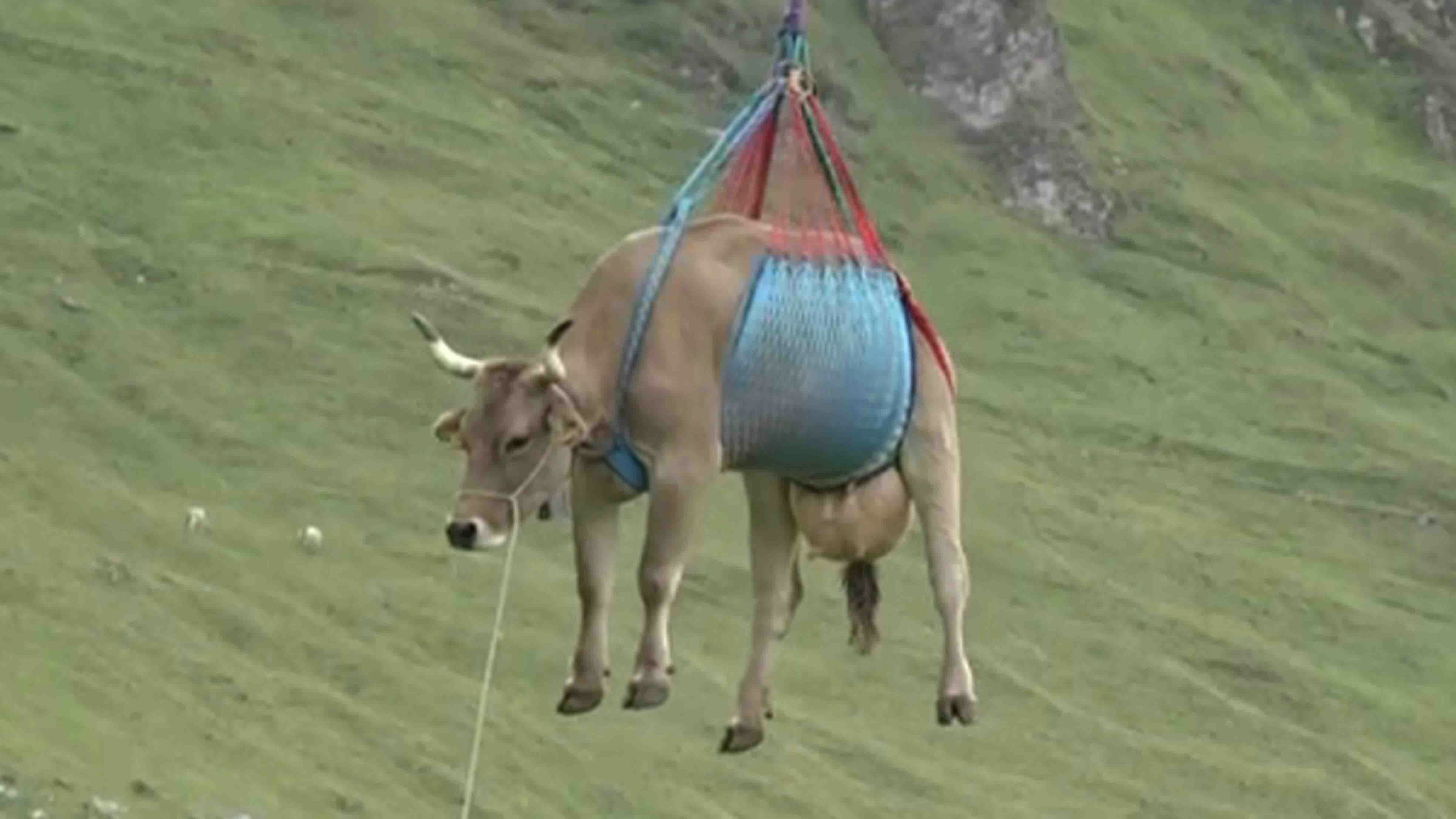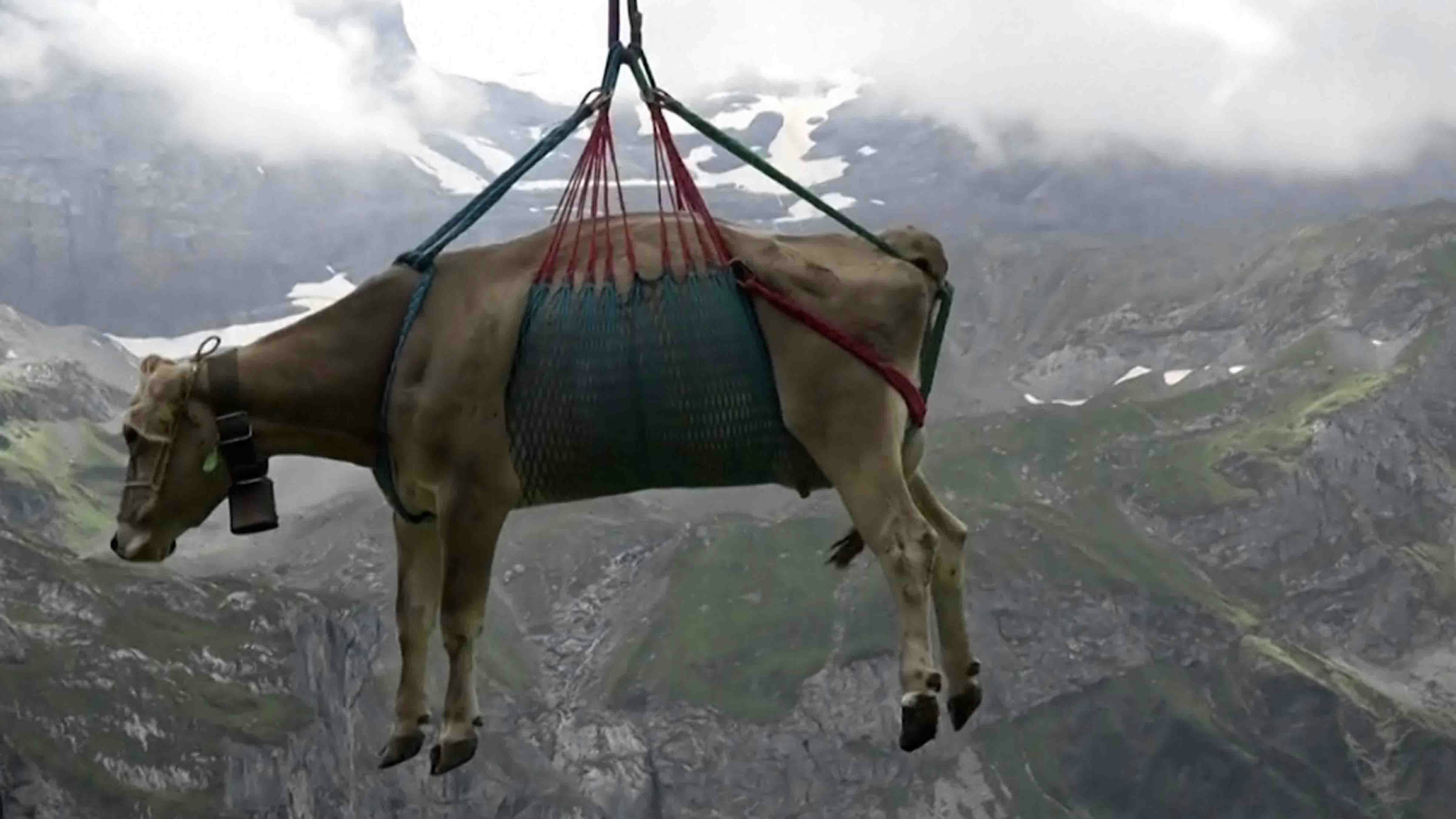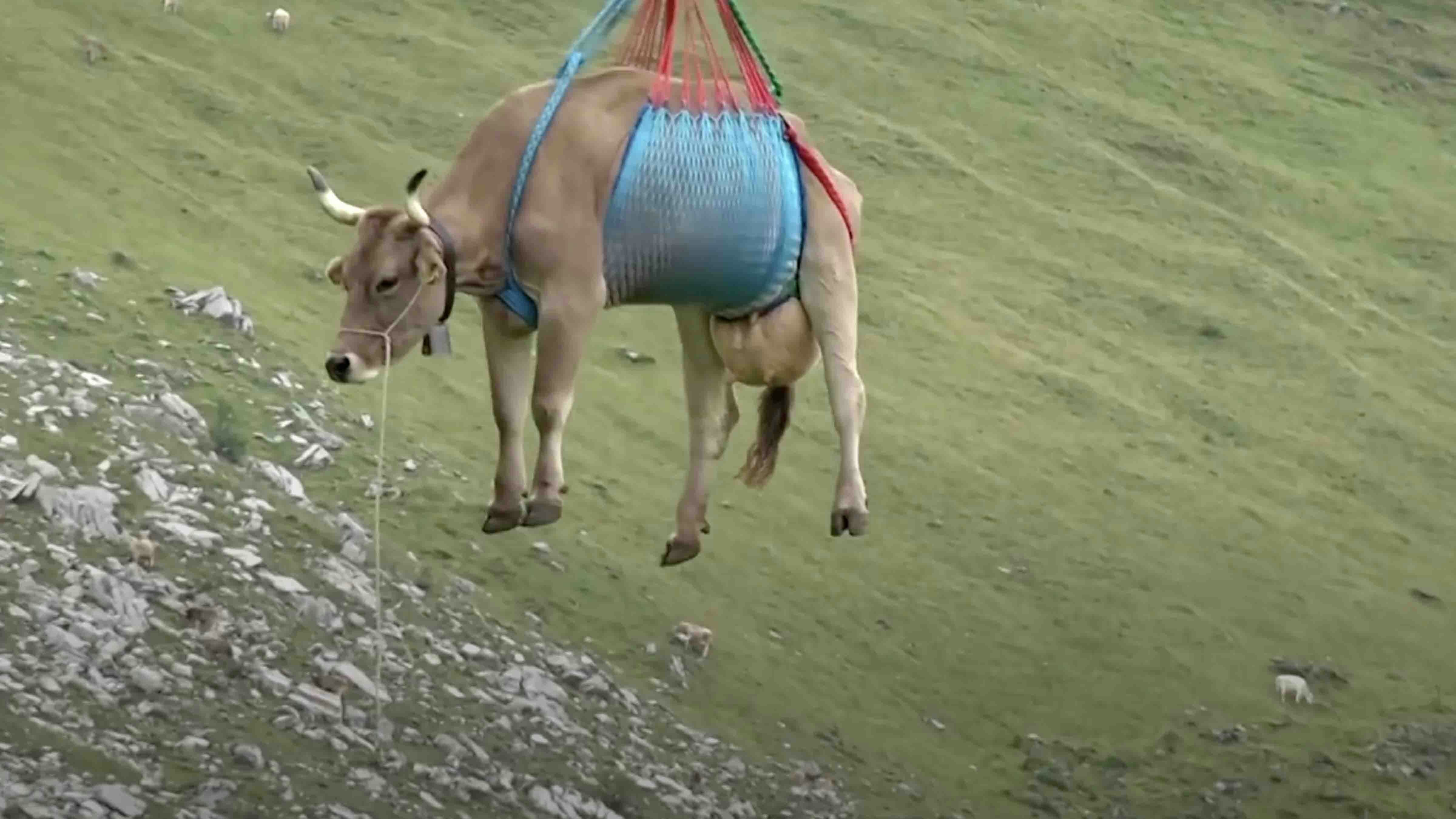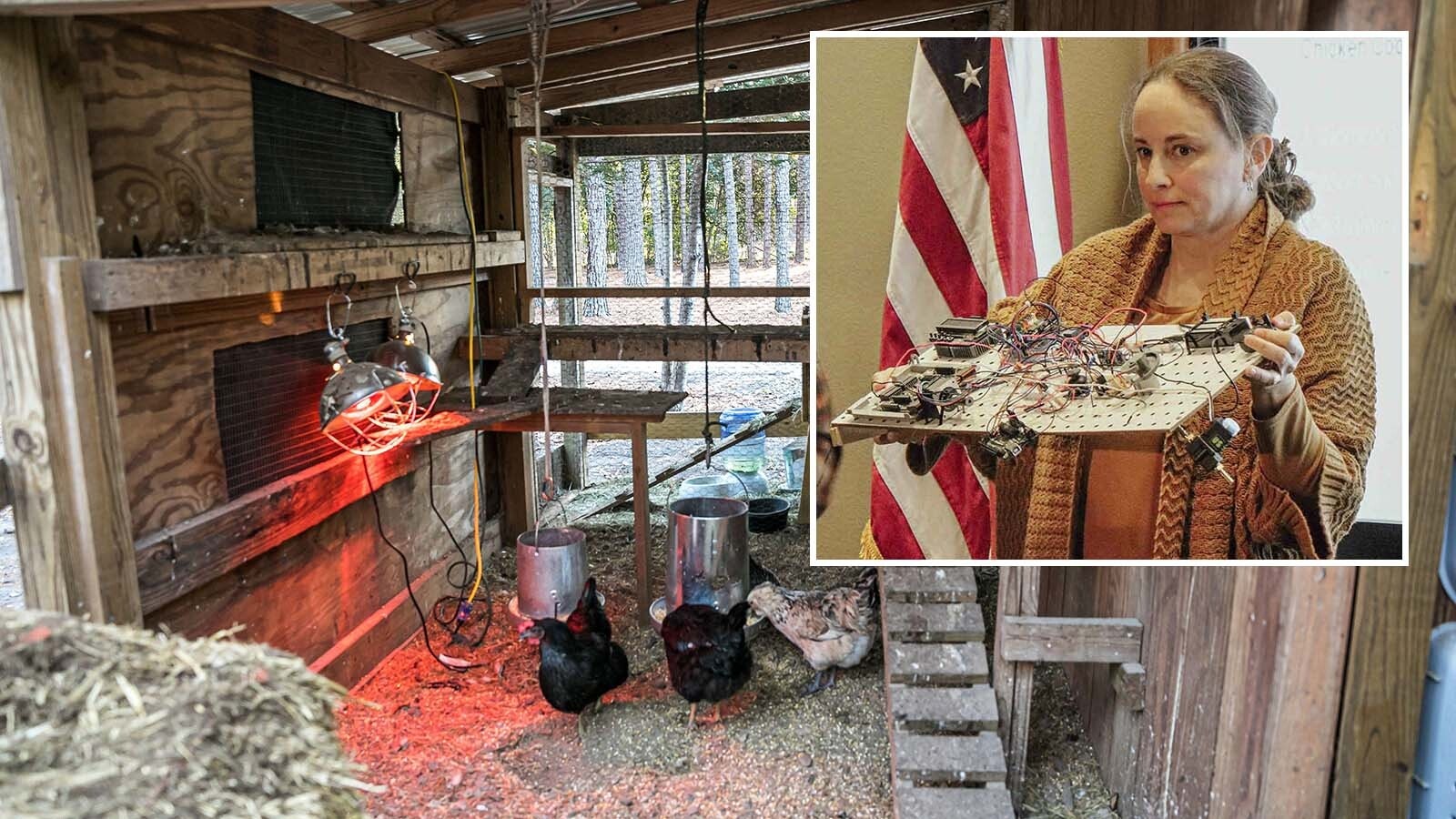When Wyoming ranchers need to get medical treatment for hurt cattle, a vet may come to the ranch and treat the animal on-site, or if that’s not possible, a cow could be loaded onto a trailer to get to the nearest clinic.
In Switzerland, injured cattle fly the friendly skies.
Because of the rugged landscape and general inaccessibility to where the cattle are, getting cows to vets takes a little extra effort. A video posted last week to the Nature is Amazing X feed (formerly Twitter) shows how that happens with a cow being evacuated from mountainous terrain dangling from a harness attached to a helicopter.
The scene looks like a “Jurassic Park” training video on how to feed a T. rex. While it’s certainly an attention-grabbing thing to see and might be practical in the neutral European nation, the sky is not the limit for Wyoming ranchers with sick or injured cattle.
Udderly Unnecessary
Jim Magagna, executive vice president for the Wyoming Stock Growers Association, said aerial vehicles like helicopters and drones are potent tools for Wyoming ranchers to perform a host of tasks. But, airlifting livestock, as shown in the video, isn’t one of them.
“I don't see how it would be practical,” he said of air ambulances for Cowboy State Cows. “Where would it ever happen? It's technically doable, but I don't foresee any real circumstances where it's likely to be used in Wyoming.”
Topography might have something to do with it. The state of Wyoming is more than six times larger than Switzerland, but several mountain ranges densely cover the European nation.
In such mountainous terrain, the most effective way to move a cow, horse or other livestock might be by hitching it in a harness and sending it skyward. Magagna could only see one scenario where a Wyoming rancher might moo-ve an animal via a helicopter harness.
“If it's a highly valuable animal, it's feasible,” he said. “Perhaps a prize bull or something that was lost or needed to be transported quickly for veterinary care. It wouldn’t happen for routine livestock.”
There are a few Kobe beef ranches in Wyoming, and Kobe cows can be worth as much as $30,000 each.
Another potential scenario is if a bull or cow gets itself trapped or stuck in an inaccessible spot while grazing.
Cowboy Country
Maybe flying cattle with a ticket in bare-basic economy is worth the expense in Switzerland. In Wyoming, better solutions are built into the state’s cultural identity.
Magagna likes a conventional approach. If any livestock wander into a rugged area where aerial evacuation could be an option, there’s no reason why a Wyoming cowboy couldn’t get there, too. That’s because the theory that if a cow can get there, it can get out is usually true.
“If the livestock are still mobile, getting up there by horseback and bringing them down is the most normal method,” he said.
The simplest answers might not always be the best or most exciting, but they are often the most economical. Perhaps the Swiss enjoy using as many extravagant tools as possible, which might explain the Swiss Army knife.
But what if an animal was hurt and couldn’t be led out? Apparently, the cow being carried in the helicopter harness in the viral video was injured, a somewhat common occurrence in Switzerland, explaining the evacuation.
Magagna conceded that an injured animal in an inaccessible place might force a rancher to make a tough decision, but they’ve been making those decisions as long as humans have been ranching.
“If an individual animal was injured and wasn't able to travel on its own,” he said, “I think it would come down to a decision of weighing the value of that animal versus the cost that would be involved in an aerial transport.”
Humanely euthanizing an injured animal might not be the neutral solution preferred by Switzerland, but Wyomingites are pragmatic by nature. That approach is why Magagna believes Wyoming’s ranchers will avoid high-flying ideas for tried-and-true, grounded solutions.
“Even if the livestock owner had their own helicopter that was used to do it, I don't see it in most cases being feasible,” he said. “I'm not saying it couldn’t be, but I don't see how it would be practical.”
Flying Deer
Helicopter transport might be too “pie in the sky” for Wyoming ranchers, but flying hoof stock can still be spotted in Cowboy State skies. Because while aerial transport isn’t practical for ranching, it is for wildlife management.
The Wyoming Game and Fish Department occasionally uses helicopters to relocate wildlife. For instance, capturing and moving mule deer allows researchers to check it for disease, take biological samples and outfit it with radio collars for movement and migration studies.
In those scenarios, helicopters are operated by flight and capture crews from private contractors rather than Wyoming Game and Fish personnel. Many contractors come from New Zealand, where, like in Switzerland, moving and managing livestock with helicopters is more common.
“Most of those guys are Kiwis,” Shawn Blajszczak, the Wyoming regional director of the Mule Deer Foundation, told Cowboy State Daily. “It’s extremely dangerous work.”
Andrew Rossi can be reached at: ARossi@CowboyStateDaily.com








